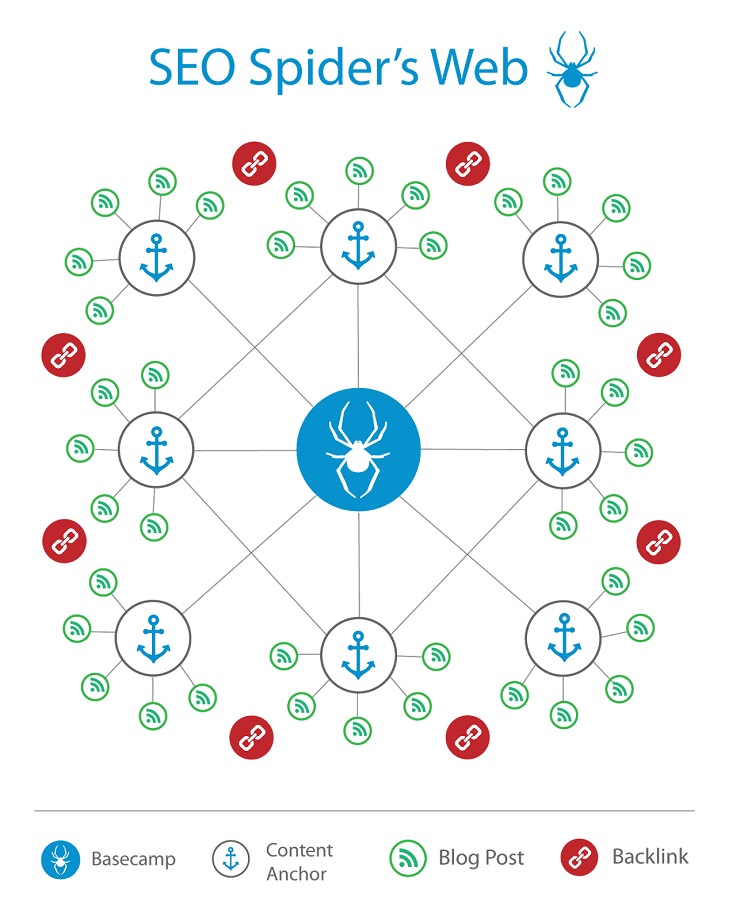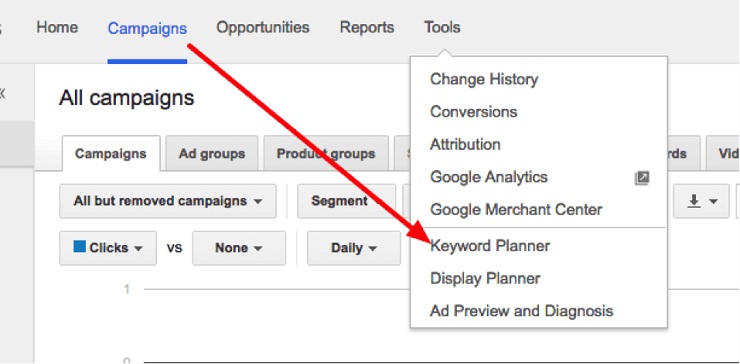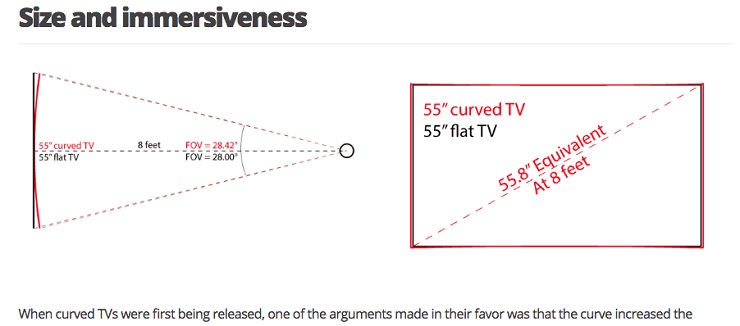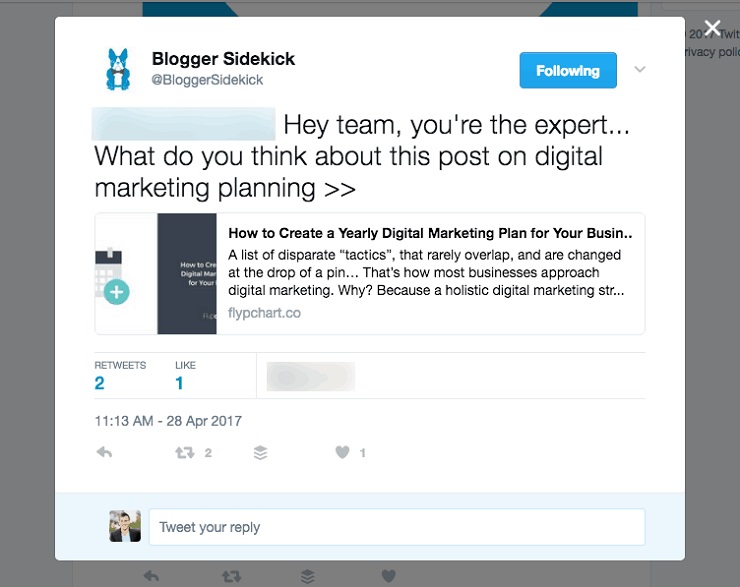Starting an ecommerce business is easier than it’s ever been.
With platforms like WooCommerce and Shopify, you can literally have an online store set up within a few hours.
Then all you need is a product, which is also easier than ever with digital platforms connecting businesses all over the world directly with low-cost manufacturers in Asia.
But with a significantly lower barrier to entry, the world of ecommerce is becoming increasingly competitive. You may be able to hang up a virtual shingle in a matter of hours, but you might as well have done so in the middle of the Sahara Desert if you don’t have a good strategy for getting consumers’ attention.
Your marketing strategy needs to be as shrewd as ever. The days of relying on ads and random searches to draw customers are long gone, with advanced strategies like content marketing now dominating the landscape. But so many people get content marketing wrong, or are simply baffled by it.
Fear not, as this post will lay out an in-depth, step-by-step, and highly effective strategy to getting started in content marketing. It’s all about spinning the Spider’s Web.
How Customer Acquisition in Ecommerce is Changing
Once upon a time, not that long ago really, you could build a profitable online store from the ground up that relied on AdWords, web advertising through Google.
It’s true that AdWords still makes a lot of sense for consumer products, because it’s designed around a direct query-and-response algorithm. Someone searches for “beach umbrella,” your ad shows up at the top of that search, they click through, and you make a sale. Bingo.
But with more people competing for the most prominent ad positions in a Google search, it is becoming more and more expensive to acquire customers through this channel.
Not to mention that when you turn off your ad campaigns, you essentially turn off the revenue tap at the same time. In other words, your success is heavily reliant on one channel.
So what’s the answer?
You Need an SEO Content Strategy
Most people don’t really get content marketing.
They think they do, but after a couple of months of publishing a few blog posts without an uptick in sales, they quickly give up.
Despite the shallow understanding of how it works, content marketing is definitely the cool thing to do at the moment. Every Tom, Dick, and Harriet is buying into this whole organic trust-building endeavor to woo customers to their online business.
The idea is fairly straightforward—you establish a footprint online through blogging and other online communications, drawing in organic traffic and building a loyal audience through the content on your site.
But what most content marketing experts won’t tell you is that it’s not going to deliver you customers overnight. No seriously, it won’t. Content is hard work. It takes a long time to pay off, and only those who persist, persist, and persist will actually see the true benefits.
So before you continue reading, have a think about whether you’re willing to wait. Whether you’re willing to put the work in.
In two months time, when you haven’t seen any significant return on investment, what decision will you make? Will you just go back to paying more for AdWords? If you’re not in it for the long haul, you probably shouldn’t bother in the first place.
If that’s your choice, then cool—I’m not here to judge. But don’t pretend you’re dedicated to the long-term prosperity of your brand if you’re not willing to fight for it.
Content Is Your Brand
If done properly, content marketing will accrue trust and credibility with your audience. This trust and credibility turns into a brand that people want to associate with.
They’ll start telling their friends about you, clicking on your ads more often, and consistently buying your products. But perhaps the most exciting benefit of content marketing done the right way for ecommerce stores, is the organic search engine traffic it can generate.
I’m talking about those Google rankings that everyone is chasing, for a whole array of search terms that your AdWords strategy would never even know about.
How to Do Content Marketing Right
SEO and content marketing for ecommerce businesses can be a unique challenge. You potentially have hundreds of products to promote, so your content strategy can go in a lot of different directions. But how do you make sure that strategy aligns with the best SEO?
In other words, how do you make sure your blogging is bolstering your brand, while also bringing in the most traffic possible via search results?
To answer this question, I developed a concept called the SEO Spider’s Web, a way to help non-marketers better understand how to approach content marketing and SEO content strategy in a way that maximizes search engine rankings. Here’s a visual representation:
The spider’s web has anchor points that form the main structure of the content on your website. These anchor points are definitive pieces of content, about a shortlist of topics that are most important to your ideal customers.
Ideally, these core topics will also have the potential to attract a considerable amount of search engine traffic to your website over time. We will discuss how to find these content anchors in the next sections.
Once you have defined your anchor points, the rest of your SEO content strategy should stem from these core topics. They guide website visitors around your website, and could even form the structure of your email autoresponder sequence. They become the cornerstones of your entire marketing strategy.
Perhaps a little grim, but you can see how this works: You’re the spider at the center, and your potential audience, like little consumer flies, will find their way into the web you’ve laid as they search the internet for things they want to buy. Only instead of trapping and eating them, you’re going to win them over and turn them into loyal, lifelong customers.
Seems like a cool idea, but not sure where to start? No worries, I’ve distilled this concept down into a simple four-step process that you can take away and apply right away to your ecommerce business.
Step 1: Find Content Opportunities
In step one of this process, you are looking for what I call “content opportunities,” or topics that inform what content anchors you’re going to create, along with some bonus topics you can use to write blog posts.
These opportunities are topics that your ideal customers are searching for online, and sharing regularly on social media. They are evergreen in nature, valuable to your customers today, tomorrow, and 12 months from now.
But perhaps more importantly, these are topics that you will be able to compete for in organic search results, because the other content already available isn’t that impressive.
Let’s take a closer look at how to identify these SEO content opportunities:
Pinpoint High Search Volume Keywords
When finding topics for your content anchors, the backbone of your SEO Spider’s Web, you want to make sure that your customers are regularly searching for keywords related to these topics. It’s no good putting in a ton of effort creating content if your potential search engine traffic over time is insignificant.
To find out whether or not a topic is going to be worth targeting, you will need to conduct keyword research. There are lots of paid keyword research tools out there that can help you find content opportunities. But I’ll give you some examples using Keyword Planner, because it’s a free AdWords tool and a great place to start.
If you don’t already have an AdWords account, go through the steps to create one.
Once you’re logged in, under Tools, click on Keyword Planner:
You’ll then see three options to find keywords and search volume data:
If you’re at the beginning of your keyword research journey, then go with the first option, Search for new keywords using a phrase, website or category.
Then you’ll see a menu of options like this:
You can move forward with your keyword research using any of the following:
- Your product or service
- Your landing page
- Your product category
I recommend using base keywords related to your ecommerce products to start.
Say you’re an electronics ecommerce store, for example. You’ll want to type in some keywords that are specific to your industry. Just typing in “electronics” is way too broad and can bring back some really high search volume keywords that won’t help people zoom in on your business.
Try typing in some specific keywords related to your products. Separate each by commas:
If you’re targeting a specific region for your ecommerce sales, make sure you change your location targeting before clicking Get Ideas.
Next you’ll see the average monthly searches for your keywords, and a list of other related keywords and their search volumes:
This is a very basic start to your keyword research, because the results it returns are usually quite general and hard to rank for. If you’re trying to catch flies that are searching for something as broad as “electronics,” for example, the universe of sites that search will return is so massive, they’ll never find your relatively small and still-unknown spider web. Just start to capture the data you need at this point, and keep digging for the right words.
Want to Learn How to Start & Grow a Profitable Online Store in 12 weeks? Sign Up for Our FREE Masterclass!
Learn How to Start a Profitable Store in 12 Weeks or Less. Join our FREE Ecommerce Masterclass!
Dig Into Your Target Audience’s Discussions
To find killer content opportunities, you need to take your keyword search a level above basic, “product-centric” topics. Ultimately, you want your SEO content strategy to help address potential questions or problems related to your niche. By doing so, you’ll attract interest from people who aren’t necessarily ready to buy, which is actually exactly who you’re looking for.
It’s better to attract those people than to attract consumers Googling a product, cash in hand. The reason is that your SEO content strategy is all about building—building trust, building interest, building an audience.
To find the questions or problems your audience has, head over to Quora and type in one of your product keywords. Click on one of the related topics that pop up:
Quora will then take you to a feed of common questions people ask about that keyword.
Questions like these are great fodder for blog posts:
Make a list of these longer phrases and questions based on the popular topics you find in Quora, and check out whether or not there is recorded search volume for these using the AdWords tool above.
Answer the Public is another great tool to find common questions related to your products:
You can also head over to a long-tail keyword research tool like Keywordtool.io and type in one of your product keywords. Here were the results for “bridesmaid shoes”:
Keywords such as “bridesmaid shoes for winter wedding” are likely where your greatest content opportunities will be. They are longer phrases, with potentially less competition for high-quality content in the search results.
Look for Lackluster or Outdated Content
Once you have a healthy list of high potential keywords to target, spend some time surfing through content already popping up high in the search results for that keyword.
Here I typed in “how to embellish bridal shoes” and a few content opportunities came up:
Two articles are ranking high for this keyword, one written in 2012 and one in 2015. Google likes fresh, quality content. So if you write something newer and better than these articles, you have a chance of ranking higher.
In addition, one article had eight examples and the other had 20. So make sure your post includes 30+ examples. That way you become the definitive source on the topic, and eventually Google will more likely want to rank your resource at the top of its results.
Let’s return to our electronics ecommerce store example. I typed “iphone accessories” into Keywordtool.io and saw that “iphone accessories 2016” was one of the top results:
Now that we are in 2017, there could be an opportunity to create an update for all those outdated 2016 articles out there: “The 10 Best iPhone Accessories for 2017.”
As you go along, keep a lookout for such opportunities that pop up.
After step one, you will hopefully be left with a long list of potential keywords you can create content for. Some of these keywords will end up being used for blog posts, while others can be used to create your content anchors—more on that next.
Step 2: Create High-Performing Content Anchors
Now that you have identified some content opportunities, it’s time to create some content anchors around those subjects. Content anchors are your cornerstone pieces of content.
What sets anchors apart from other blog posts? They are valuable, comprehensive, and better than any other similar content out there on your chosen topics. Like blog posts on steroids. But no side effects.
To find your content anchor topics, you will need to look for common themes from your list of keywords. The goal is to group all of those high-potential keywords under a set of top-level topic areas, and then create one definitive resource—an in-depth, top-notch blog post—about each of those primary topic areas. That resource is your content anchor for that topic.
Once those anchors are established, you can then write a series of other blog posts based on the list of keywords, blog posts that may be less robust than your content anchor, but fall under the same umbrella topic area as the anchor.
There is no real limit to how many content anchors you create for your site, but you are looking to make the user experience and site navigation easy for your visitors. With that in mind, you really shouldn’t have more than eight core topics that your content revolves around. These are the pillars of your content architecture.
They will also be optimized for keywords that pose an exciting opportunity for search engine traffic as I discussed in step one of this process.
Take this post from RTINGS for example:
It seeks to answer a common question: What’s the point of having a curved TV? Here’s what makes this a great content anchor:
• It stands out from the crowd. Most of the content you find when you search for “curved display for tv” is about specs and ways to buy.
RTINGS doesn’t assume you want a curved TV at all, and makes content that reflects that. It just wants to help you with your problem.
• It is formatted for readability. RTINGS uses plenty of sub headers, short paragraphs, and other elements to break up text and make the post easy to digest.
• It has great visuals and details. RTINGS covers all the technical details and aesthetics with visual imagery to create a complete and engaging article:
• It is optimized for SEO. RTINGS covered all its on-page and off-page SEO bases to appear on the first page of search results for “curved screen for TV.”
Scaling up content creation comes with its challenges, but if you focus on a few high-impact pieces to get started, it sets you up for the long term.
Want to Learn How to Start & Grow a Profitable Online Store in 12 weeks? Sign Up for Our FREE Masterclass!
Learn How to Start a Profitable Store in 12 Weeks or Less. Join our FREE Ecommerce Masterclass!
Step 3: Boost the Visibility of Your Content
Once you start creating your content, you need to make sure the older and newer posts stay visible and accessible.
You can do this by setting up a “Basecamp” (the center of the Spider’s Web), a centralized page where you recommend the most important resources on your website. There are plenty of ways to set this up.
Look at what The Knot does for example. They include various wedding-related topics as part of their toolbar:
That’s optimally visible, and when you click on one, such as “Honeymoons,” you’re taken to a content section devoted to the subject:
iPhoneLife.com takes another great approach to making their content visible and easily accessible. They include sidebars of popular and featured content:
This helps attract attention to other articles on their site:
Any and these strategies are great ways to help people navigate around your site and discover more content. You can also add in-text hyperlinks within blog posts to other relevant content, increasing its visibility.
Step 4: Promote, Promote, Promote
Publishing content is a pointless quest if you don’t effectively promote it. The more eyeballs you get on your content, the more shares and links it will acquire, and the better your content marketing results will be over time. (Hint: Social sharing and backlinks to your content are strong quality signals that influence how Google ranks your content in search results.)
Here are a few of the many strategies you can use to promote your content:
Social Media Outreach
Find social influencers with a big following. Try to get them to promote your content for you.
To find these influencers, head over to Buzzsumo and type in one of your target keywords:
You’ll then see a list of the most shared content related to that keyword. Pick a topic you like, then click “View sharers”:
Then you’ll see a list of social sharers who regularly share the kind of content you write:
Now you can @ mention them on social media when your post goes live asking for their expert opinion, just like this:
Community Engagement
Participate on Q&A sites, community forums, Reddit, etc. to promote your content. Try to find discussions where your content would be relevant and users are highly engaged.
For example, I just typed the keywords “bridesmaid dresses for winter wedding” into Quora, and found tons of related questions:
Of course, just like any online community, you can’t just jump in and go nuts with self- promotion. You have to lead with generosity, and build credibility first.
Here are some tips for accruing trust and credibility on Quora:
• Engage in discussions regularly by offering free advice or recommendations.
• Follow other people in your industry, and keep up to date with their activity. Interjecting when necessary.
• Upvote other questions and answers from influential people in your industry on a consistent basis to increase your visibility.
Guest Blogging
Guest blogging is a great way to build a brand name, attract traffic back to your site, and build backlinks for SEO.
For the electronics ecommerce site example, finding guest blogging opportunities is as simple as entering a niche keyword + “write for us” into Google:
Keyword + “guest post submission” is another great search option:
Once you have a list of potential guest blogging sites to contribute to, start to familiarize yourself with the editorial process for each publication. What do they care about? Do they have quality guidelines? Does anyone in your network know the editor?
You want to prepare a pitch that makes them excited for you to contribute to their site. Think about a few credibility signals you can use in that pitch, such as previous high-quality articles, proven results, or a strong industry standing.
The more guest posts you contribute, the easier it will get to land them.
Targeted Link Building
Look for other opportunities to build links besides guest posting, such as link roundups or finding broken links on other websites.
Targeting broken links is one great strategy to get more links to your content. Use Google to search for your niche keyword + intitle:resources.
Go through the resource guides and look for any broken links in their listings:
If you find one, send an email to the webmaster telling them about the broken link. Then suggest a link to one of your pages as a replacement! This strategy works well if you target resource lists that your site (or better yet, anchor content) is really relevant for.
Paid Media
There are also paid options to promote your content (not your products directly) that can develop some much needed traffic momentum.
Invest in native advertising to feature your content on high-authority sites. Here’s an electronics content example on Buzzfeed:
Tools like Outbrain and Taboola make it easy to distribute and promote your content through native advertising.
Want to Learn How to Start & Grow a Profitable Online Store in 12 weeks? Sign Up for Our FREE Masterclass!
Learn How to Start a Profitable Store in 12 Weeks or Less. Join our FREE Ecommerce Masterclass!
Ready With Your SEO Content Strategy?
Ecommerce businesses are fantastic and easier than ever to start, but they can be difficult to market. If you are relying on AdWords traffic alone, or simply ranking your product pages in search results, it can be a very expensive and high-risk strategy.
But if you focus on creating and promoting content anchors and optimizing them for SEO, you are investing in your brand in the long term. These authoritative pieces of content are like assets on your website that accrue value well into the future.
Once visitors are on your website, reading content, it is then up to you to help them find their way to your product pages—with smart calls-to-action or strategically placed email opt-in forms.
What is stopping you from executing this SEO content strategy for your ecommerce site? If you have any questions about this strategy, let me know in the comments below.
















































